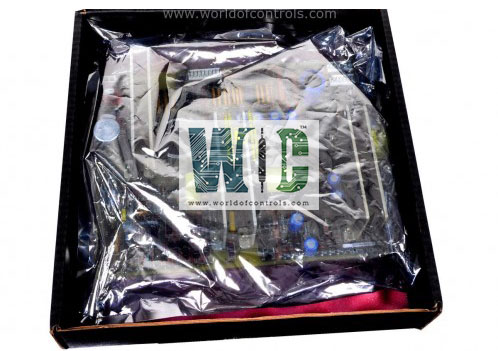
World Of Controls understands the criticality of your requirement and works towards reducing the lead time as much as possible.
DS3800XPEN - Small Electronics Backplane Card is available in stock which ships the same day.
DS3800XPEN - Small Electronics Backplane Card comes in UNUSED as well as REBUILT condition.
To avail our best deals for DS3800XPEN - Small Electronics Backplane Card, contact us and we will get back to you within 24 hours.
SPECIFICATIONS:
Part Number: DS3800XPEN
Manufacturer: General Electric
Series: Mark IV
Product Type: Small Electronics Backplane Card
Form Factor: 3U / 6U
Number of Slots: 4 to 16
Power Supply Voltage : +5V, +12V, -12V, 3.3V DC
Maximum Current Capacity: Up to 10A
Operating temperature: -20°C to +70°C
Size: 8.25 cm high x 4.18 cm
Repair: 3-7 days
Availability: In Stock
Weight: 2 lbs
Country of Origin: United States
FUNCTIONAL DESCRIPTION:
DS3800XPEN is a Small Electronics Backplane Card manufactured and designed by General Electric as part of the Mark IV Series used in GE Speedtronic Control Systems. A Small Electronics Backplane Card is a compact circuit board designed to serve as a central hub for connecting multiple electronic modules or components within a system. It acts as a backbone, facilitating communication and power distribution between various plug-in cards or devices. These backplane cards are commonly used in systems that demand high reliability, modularity, and efficient space utilization, such as embedded control systems, compact industrial setups, telecom equipment, and aerospace applications.
INSTALLATION:
Installing a small electronics backplane card typically involves mounting it into a chassis or enclosure that supports its form factor, such as 3U or 6U sizes. The backplane is secured using standard mounting screws or rails and connected to a power supply. Plug-in cards, such as I/O modules, processors, or communication interfaces, are then inserted into the designated slots, aligning with edge connectors on the backplane. Care must be taken to handle the components in an ESD-safe environment, ensuring proper orientation and secure connections for reliable operation.
FUNCTIONS OF A SMALL ELECTRONICS BACKPLANE CARD:
Power Distribution: The backplane card receives power from an external supply and evenly distributes it to all the connected modules or circuit cards. This ensures that each component receives the necessary voltage and current to operate effectively.
Signal Interconnection: It provides a physical path for data signals to travel between various modules. Instead of using multiple cables, the backplane has built-in traces (conductive paths) that connect plug-in cards, simplifying communication between them.
Slot Interface: The backplane contains multiple slots or connectors that allow other cards to be inserted. Each slot is typically assigned specific power and signal lines, enabling organized, modular connectivity.
Communication Support: Depending on the system, the backplane supports communication protocols such as PCIe, VME, or CompactPCI. This allows high-speed data transfer between modules like processors, I/O interfaces, or memory units.
System Scalability: Backplanes make it easy to add or remove functional modules as needed. For example, you can upgrade a system by plugging in a new processor card or additional I/O without rewiring the system.
WOC maintains the largest inventory of Replacement Parts for GE Speedtronic Turbine Control Systems. Additionally, we offer warranty-backed unused and rebuilt boards as well as board repairs for your damaged ones. For your OEM needs, our team of professionals is available around the clock. We at WOC are happy to help you with any needs you may have in terms of automation. Please contact our team by phone or email for pricing and availability on any components and repairs.
What voltage levels are typically supported by a backplane card?
Most backplane cards support standard DC voltages such as +5V, +12V, -12V, and 3.3V. These are used for powering digital and analog modules.
How many signal layers are common in backplane PCB design?
Backplane PCBs typically use 4 to 12 layers to handle high-speed signals, ensure signal integrity, and provide power and ground planes.
What communication buses can be routed through a backplane?
Commonly supported buses include PCIe, VME, VPX, Ethernet, RS-485, and CAN, depending on the backplane's architecture.